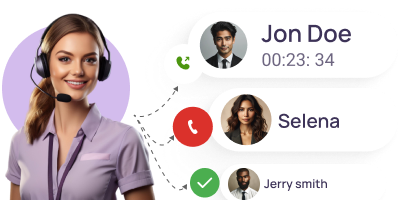Call Analytics
Insightful Call Analytics To Measure Call Center Performance
Get a 360-degree view of real-time call data, including total call volume, call duration, inbound calls, and outbound calls, with KrispCall’s call analytics feature. Understand your call center operations trends and customer engagement level and monitor agents’ performance.
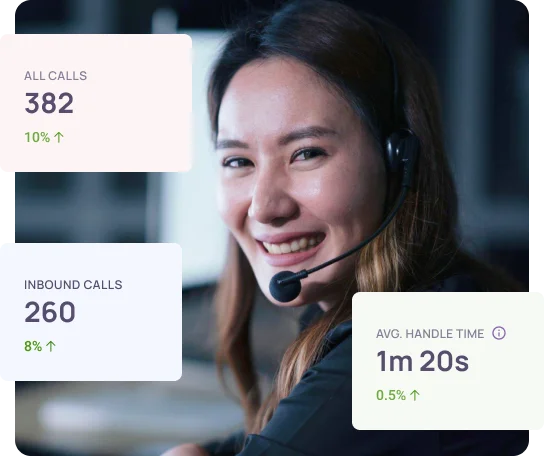


Get a Virtual Number
Get local, mobile, and toll-free virtual phone numbers from 100+ countries and expand your business worldwide.
How to view Call Analytics in KrispCall?
Getting insights into your call analytics is easy with KrispCall. Just sign up to KrispCall, choose your phone number, and gain valuable details about your phone calls.
- Create a KrispCall account.
- Login with the correct login credentials.
- Click on the “dashboard” option on the left side.
- Choose the phone number under the “Number” option of which you want to view call data.
- Upon choosing, you will find all call data under different headings, such as total calls, outbound calls, inbound calls, missed calls, service level, activities during the time and day of the week or certain duration, etc.
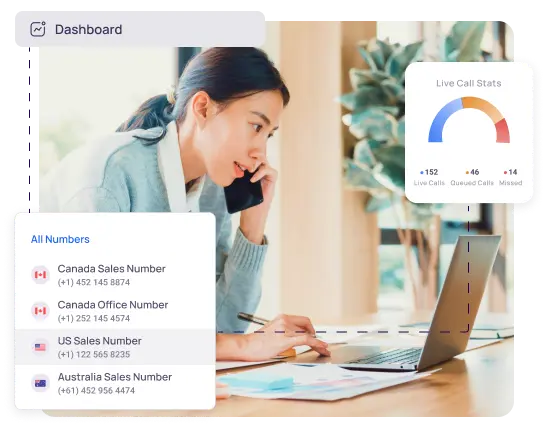
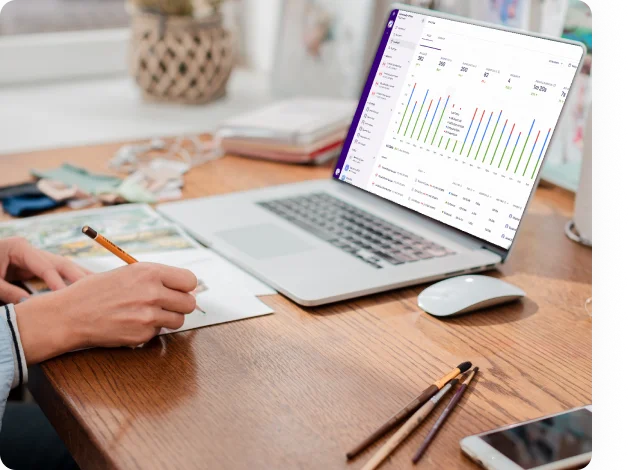
What Is Call Analytics?
Call metrics analysis is a helpful feature of a cloud-based phone system that empowers businesses to assemble, inspect, and assess phone call data for decision-making. It focuses on observing various parts of call data, for example, the length of calls, call volume, missed calls, and both incoming and outgoing calls accurately.
This call data gives detailed information on customer behavior and the success of marketing campaigns. With such vital data, businesses can improve their marketing strategies and enhance client assistance.
Additionally, the call analytics feature further allows the admin to monitor ongoing calls between agents and customers, which helps analyze agent performance.
How Does Call Analytics Work?
At the beginning of the process, data gathering occurs, where important call information, such as outbound call duration and total number of calls being made and received, are captured.
The collected information is then pooled together and arranged in a centralized system for access. Afterward, call analytics employ advanced algorithms and reporting tools to generate reports and visual representations.
These insights assist businesses in comprehending customer preferences, identifying trends, and evaluating the efficacy of marketing strategies. Equipped with this knowledge, businesses can optimize their campaigns, enhance customer service, and uncover areas for enhancement.
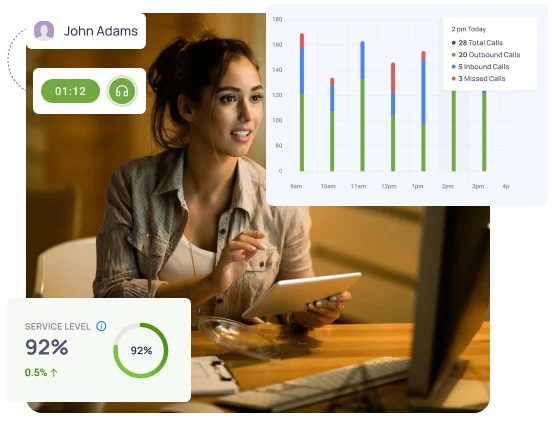
Call Analytics vs Call Tracking
| Call Analytics | Call Tracking |
|---|---|
| Call analytics is a feature that analyzes call data to extract information about customer behavior and evaluate marketing performance. | Call tracking is a tool that enables businesses to determine where their incoming phone calls originate. |
| This data encompasses call duration, volume, the total number of incoming and outgoing calls, etc. | This is done by assigning phone numbers to marketing campaigns or sources. |
| Leveraging call analytics gives businesses insights into customer behavior patterns and agent performance evaluation. | By implementing call tracking, businesses can easily monitor which marketing efforts generate the most phone leads and identify callers who are more likely to be qualified leads. |
| Call analytics is the process of using that data to gain insights. | In short, call tracking is a feature that provides data. |
What Are the Benefits of Call Analytics?
Businesses of all sizes and types can benefit from the call analytics feature. Some of its notable benefits are:

Things to consider while choosing a Call Analytics Software
More Features like Call Analytics
Unified Callbox
Get every detail of calls, SMS, MMS, and voicemails in a single window and access all conversations without switching apps.
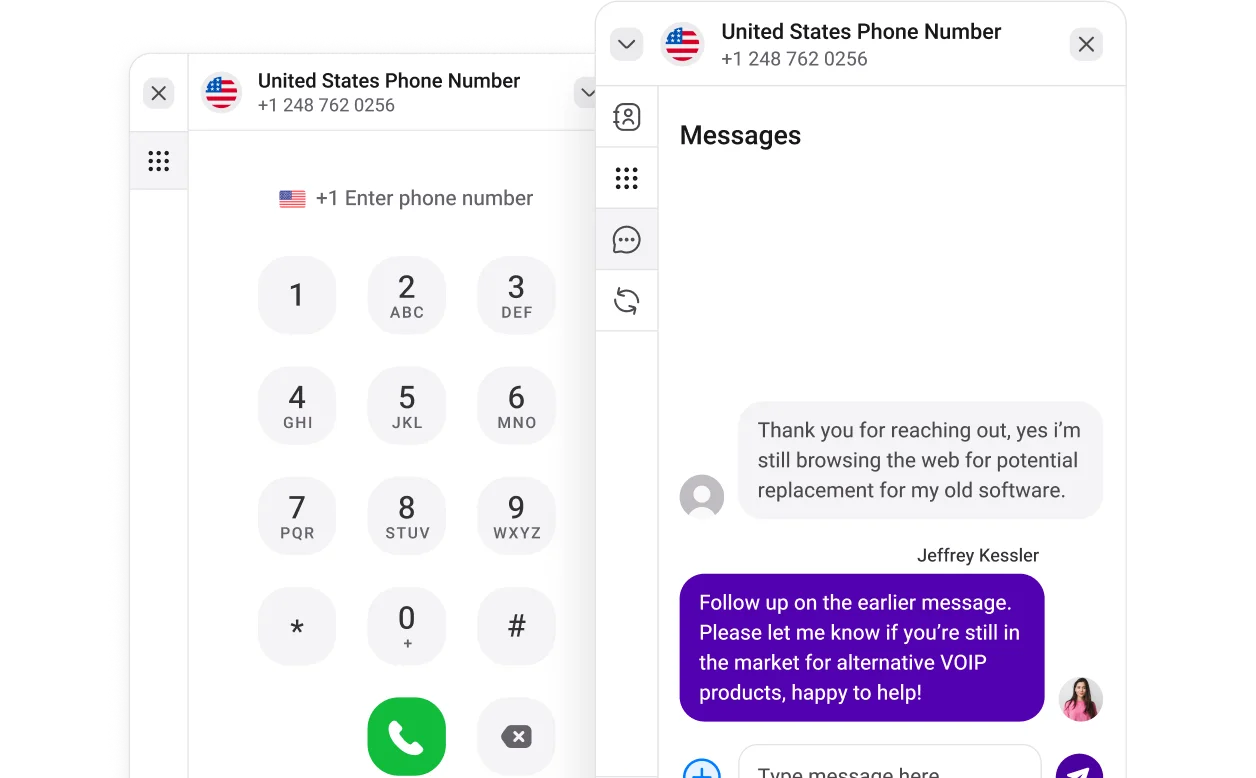
Phone Tree (IVR)
Leverage KrispCall's phone tree for efficient call routing, ensuring swift access to the right department for information.
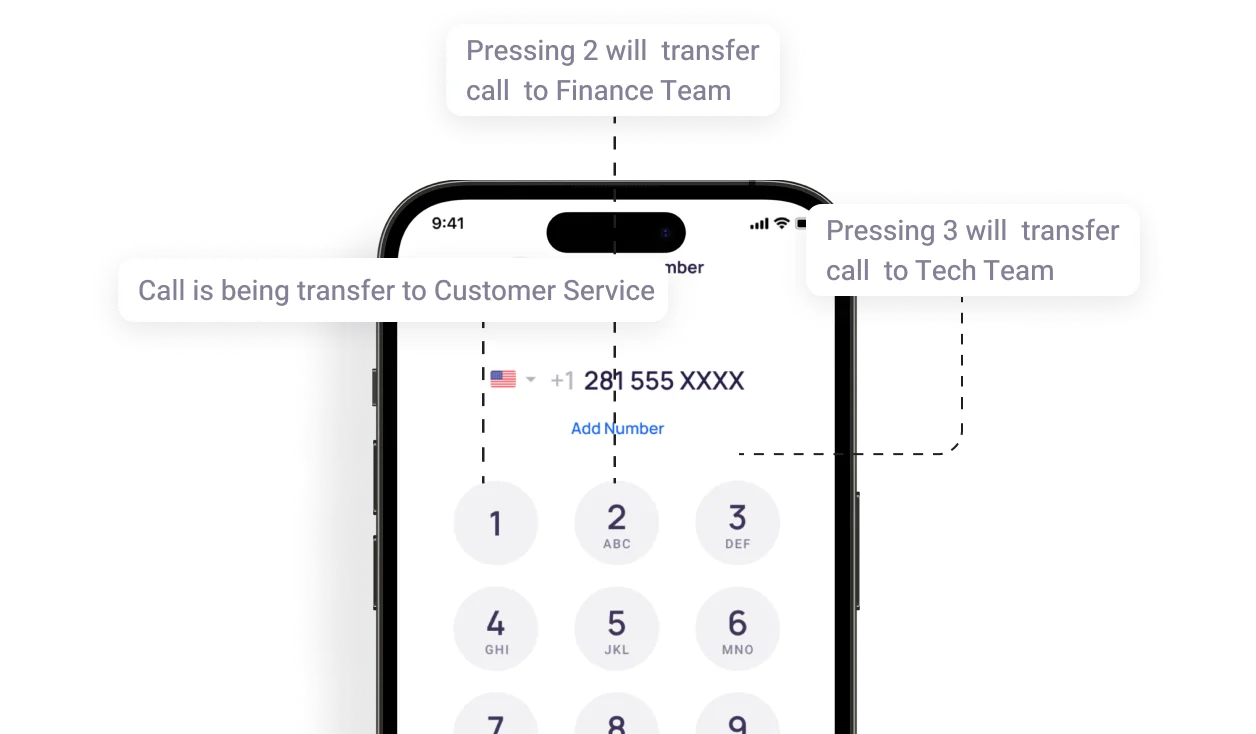
Shared Phone Number
Boost customer response by sharing your number with your team members and eliminating missed calls.
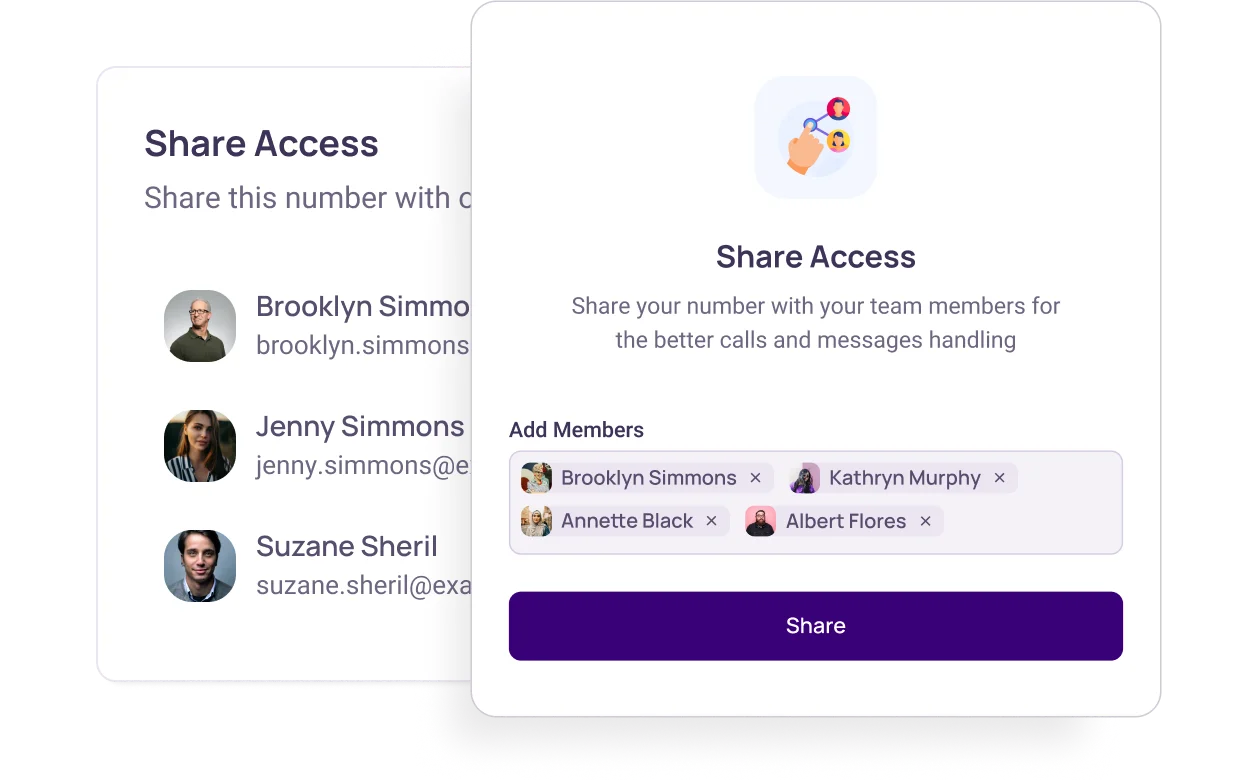
Frequently Asked Questions
Didn’t find the Answer you were looking for? Visit our Help Center or Contact Support
Various call data information like the total number of calls received, missed and dialed, call duration, call volume, waiting time, live calls, service level, agents’ performance, call traffic analysis, etc, are included in call analytics.
Call analytics can be used in contact centers for various purposes. Contact center operators can use it to analyze the average duration of phone calls, calculate call abandonment rates, and measure the success of marketing efforts. Contact centers can also use it to measure the time agents take to receive calls and monitor agent performance via live call monitoring.
There are three types of call analytics, which are:
- Historical call analytics: This is the type of call analytics where call data is collected and analyzed from past calls. It provides valuable insights into customers’ interactions with the call center and how agents perform.
- Real-time call analytics: This is another type of call analytics where call data is gathered from ongoing live calls between agents and customers. It provides real-time insights into call center performance, thereby helping call centers address potential problems immediately.
- Predictive call analytics: In this type of call analytics, machine learning, and data analysis are used to predict future call metrics. It helps to identify issues before they arise and take action to prevent them from occurring.
Call duration, call abandonment rate, first call resolution rate, and service level are the three key metrics for a call center in call analytics software.
Various call data information like the total number of calls received, missed and dialed, call duration, call volume, waiting time, live calls, service level, agents’ performance, call traffic analysis, etc, are included in call analytics.
Call analytics can be used in contact centers for various purposes. Contact center operators can use it to analyze the average duration of phone calls, calculate call abandonment rates, and measure the success of marketing efforts. Contact centers can also use it to measure the time agents take to receive calls and monitor agent performance via live call monitoring.
There are three types of call analytics, which are:
- Historical call analytics: This is the type of call analytics where call data is collected and analyzed from past calls. It provides valuable insights into customers’ interactions with the call center and how agents perform.
- Real-time call analytics: This is another type of call analytics where call data is gathered from ongoing live calls between agents and customers. It provides real-time insights into call center performance, thereby helping call centers address potential problems immediately.
- Predictive call analytics: In this type of call analytics, machine learning, and data analysis are used to predict future call metrics. It helps to identify issues before they arise and take action to prevent them from occurring.
Call duration, call abandonment rate, first call resolution rate, and service level are the three key metrics for a call center in call analytics software.
